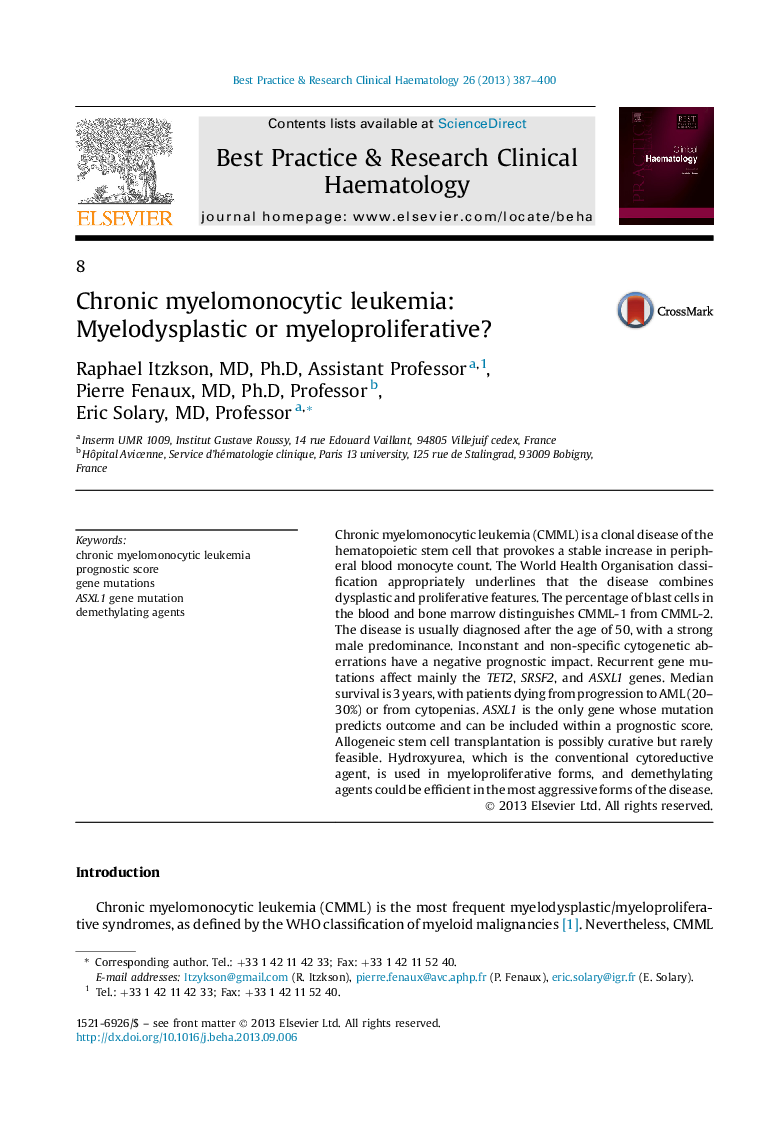| Article ID | Journal | Published Year | Pages | File Type |
|---|---|---|---|---|
| 2100128 | Best Practice & Research Clinical Haematology | 2013 | 14 Pages |
Chronic myelomonocytic leukemia (CMML) is a clonal disease of the hematopoietic stem cell that provokes a stable increase in peripheral blood monocyte count. The World Health Organisation classification appropriately underlines that the disease combines dysplastic and proliferative features. The percentage of blast cells in the blood and bone marrow distinguishes CMML-1 from CMML-2. The disease is usually diagnosed after the age of 50, with a strong male predominance. Inconstant and non-specific cytogenetic aberrations have a negative prognostic impact. Recurrent gene mutations affect mainly the TET2, SRSF2, and ASXL1 genes. Median survival is 3 years, with patients dying from progression to AML (20–30%) or from cytopenias. ASXL1 is the only gene whose mutation predicts outcome and can be included within a prognostic score. Allogeneic stem cell transplantation is possibly curative but rarely feasible. Hydroxyurea, which is the conventional cytoreductive agent, is used in myeloproliferative forms, and demethylating agents could be efficient in the most aggressive forms of the disease.
